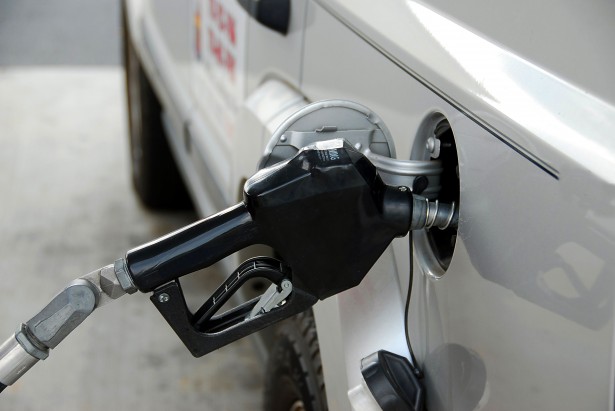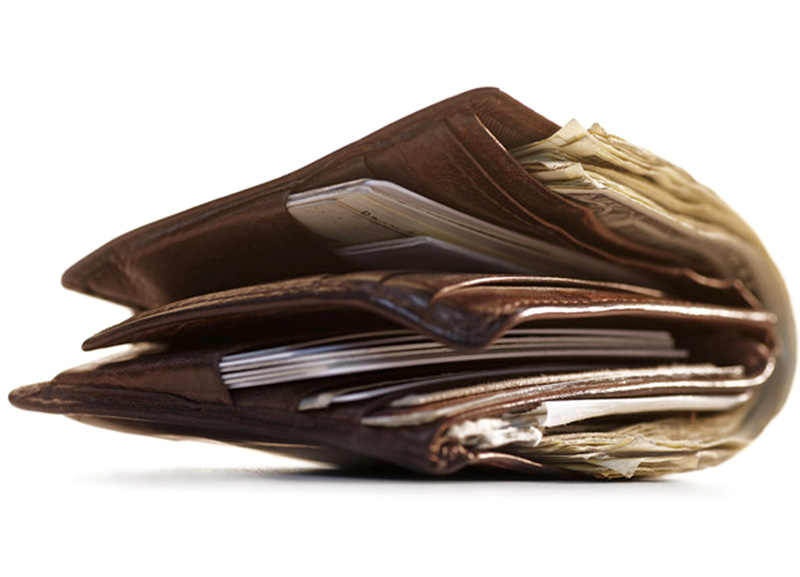You are making a delicious recipe which calls for chilly powder. You reach for the magic red stuff, when you realise to your horror that the jar is … empty!!! How could you have missed it? Damn it! You have to do without chilly. Or you have to stop cooking and go shopping. If you are like what I was a couple of months ago, you have been caught in this position several times. Delaying replenishing your supplies until you run out of them and then either making do without them or making a dash for it to get fresh supplies.
While some of you may be good at re-stocking the kitchen, you probably run out of talk time in the middle of a call with your spouse, who is half-way around the globe on a project. Only when your laptop pings about the hard disk being full after copying 7.7 GB out of an 8 GB Blue Ray HD movie do you realise that you should have paid attention to the free space.
How can you be more pro-active about replenishing things on time? What is a good time for a refill? There is no universal good rule, but you have to be consistent with one or two rules that make you act in a surefire way every time you begin running out of stuff. In this post, I introduce you to the 50% rule or the half-filled glass rule. Then we will see another variation of the rule.
50% rule

The rule is exactly what it says. You start planning action as soon as something depletes to 50%. It doesn’t mean that you rush out to shop right now. 50% is significantly less than full, but it still is sufficient enough to last until your next regular trip for restocking. I suggest that you use the trigger to put some things into your system. Set some reminders to remind you that a refill is needed. E.g. if the salt in your jar is down 50%, it is time to update your shopping list to buy fresh salt during your next weekly or monthly grocery shopping. At 50%, it is time to renew your phone talk time sometime within this week. So schedule a time for it on your calendar on a day free from other work, like a Saturday or a Sunday. Your digital wallet needs a recharge from your bank account, so set a standing instruction for the money transfer if such as facility exists.
Also don’t obsess with the number 50% to the dot. Do not tense up if things go down to 45%. Let’s say your talk-time was at 75% when you started a call. After the call, you see that it’s only 48%. You need not rush to recharge right now. Treat it just like the 50% rule. Let’s rephrase the rule: “When the level was above 50% and after another usage it dips to or below 50%, then it’s time to set a trigger, that will lead to action just in time, so that you don’t run out”. You can read about nudges and triggers in the post Grow awareness, but nudge yourself. The idea is to give yourself a reminder now, so that you will follow up before you run out of stuff.
Why not refill when the level is 80%?
A valid question. But be warned that you don’t want to replenish too soon. You will caught in a loop of quick refills. Imagine you want to refill a jar of tea as soon as it goes down to 80% after 20% of it is used. Refill packets do not come in such small sizes. So you will end up buying too much and hoarding. Why renew things at 80% when 50% works quite well?
Frequent refilling also causes stress. Your attitude will change to one that fears scarcity. Even when you possess 80% of something, you will feel like you possess too less and start refilling. It’s only a matter of time before your hoarding gets out of control.
The 50% with other conditions
What about a large 10 kg sack of wheat, a 10 terabyte hard disk or ₹ 10,000 cash in your wallet? With the 50% rule, at 5 kg of wheat, 5 TB of space and at ₹ 5,000 cash, you are still weeks, sometimes even months away from running out of stuff. Isn’t the 50% rule wasteful here?
First, I don’t recommend hoarding so much. 10 kg of wheat is too heavy to handle. You may hardly ever use 10 TB of space. It is unsafe to carry ₹ 10,000 in your wallet. But I get it. You expect guests and you need a lot of wheat over the next month. You are hoping to collect a lot of movies, videos and animation over the next 3 months or you are going to use your computer as a server machine. After 4 withdrawals a month, the bank starts charging you for any more withdrawals. So it makes sense to withdraw a large amount of cash in one go.

Let’s vary our 50% some more, so you get more rules to guide you. First consider you how much you already have. Secondly, consider the rate at which you use it. 10 kg of wheat is a lot if you use only 200 – 300 grams per day. But if you have a lot of members in your house and you end up using a kilo every two days, then 10 kg will run out in 2 weeks. A 10 TB hard disk is an ocean if all you work on are Word documents, but not when you work with 3-D animation. If the shops in your area take cards or digital money then keeping ₹ 10,000 in cash is an overkill. But in a small town with cash economy, that cash may be depleted within a week.
I suggest you look at past usage and estimate how many days something will last. If you haven’t been recording past usage, maybe you should start now. With that estimate in hand, here are three rules that work well.
- If you keep running out of stuff every 2 – 3 days, you should consider increasing the capacity to start with. Refilling too frequently is stressful and distracting.
E.g. if you eat 4 slices of bread everyday, then a loaf of 12 slices of bread will keep running out every 3 days. I suggest that you start buying a loaf of 20 slices. That way, bread can be purchased along with your weekly shopping. - Sometimes, increasing capacity is not desirable. Some vegetables start dehydrating or rotting beyond day 2. Your smartphone’s battery is going to run out every day and you cannot just fit a higher capacity battery into it. A routine of replenishing every day or every two days is then inevitable. But you can at least look for delegation or automation instead of having to do it yourself. It helps if the local dairy drops fresh milk to your doorstep every day. You can link your digital wallet with your bank account such that if the balance goes below a certain value, then a certain amount is refilled automatically (e.g., this is possible with PayTM). The latest versions of Android can be set up to back up photos to Google Photos and automatically delete photos which are backed up. This saves previous space on your phone’s SD card.
- The ideal situation is if you are at 50% and your stuff will last more than 3 days and upto two weeks. You can schedule your refills / maintenance for a day which focuses on re-stocking, e.g. a day dedicated to shopping, a day dedicated to taking backup. E.g. During your holidays, if you take 20 pictures on a DLSR camera everyday in RAW format, you would consume 400 MB per day. After 5 days of photography, you’d consume 2 GB. That would be 50% of a 4 GB card. You would still have 5 days of photography left. So a 4 GB card can last for 10 days. This is great if you have a weekly backup routine. A 4 GB card is a sweet spot for your rate of photography.
- If you are at 50% and your stuff will last several weeks to months, then stop using the 50% rule! It is time to apply the 10% rule for those items, i.e. act only when 10% remains. E.g. A sack of 5 kg or 10 kg sack of wheat for a family of two.
Where not to use the 50% rule at all
50% rule is not panacea, nor is it a good idea to apply everywhere. Here are two cases where you shouldn’t use the 50% rule.
- Charging electronic devices should not follow the 50% rule. Electronic batteries containing Lithium Ion composition are sensitive. Their lives are affected by the pattern in which they are charged.
Ideally you should not start charging a battery until only 20% of its charge remains. Nor should you disconnect the charger before it has charged upto 80%. The second rule is not easy to follow if you need to leave and take your electronics with you. - If you have finished eating 50% of the food on your plate, you shouldn’t go for a second serving already. You should finish whatever’s on your plate and if you still have the appetite, go for a second serving.
Conclusion
If you are a busy bachelor not able to stay on top of your rations or a busy mom with too many things to do, the 50% rule hopefully provides you with an easy framework to replenish your supplies on time.

In Supplychain, the warehouses use it as MOQ i.e Minimum Order of Quantity rule which is determined by factors such as minimum time required to refill, minimum stock to be maintained at store, optimum size of shipment for obtaining best price discount and transport cost. Yet another corporate usage, that when used in personal life would serve us very well.
Makes sense. They need to make sure that they never run out of stuff at the wrong time.